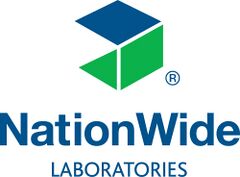Sodium
Introduction
It is very important to regulate the bodies sodium level. If it falls too low then water and ECF volumes also fall and sodium dependant transporters are also disturbed. If it rises too far the transport systems are still disturbed but body water and ECF volume increases. Sodium is therefore maintained within near constant parameters. With the amount being excreted/lost corresponding to that ingested. Salt intake is not really regulated and thus it falls to the kidneys to maintain salt levels via excretion.
Regulation
The total body content of sodium is regulated rather than the actual plasma concentration. It would be impossible to regulate actual plasma concentration for 3 reasons:
- When sodium is reabsorbed water follows it so the volume of the plasma is altered rather than the concentration of sodium changing
- Angiotensin 2 and aldosterone affect sodium but they also affect ECF volume so only quantity affected not concentration
- ADH and thirst response also work together to dilute the ECF if concentrations of sodium are high so although there is more NaCl the actual concentration is not really changed.
The kidneys are the most important regulatory organs of sodium in the body. They adjust their excretion to match the amount taken in through the digestive tract taking into account the amount lost through sweat. The handling of sodium by the kidneys is also essential to allow the reabsorption of many other important nutrients which would otherwise be lost in the urine. These nutrients include glucose, amino acids, chloride, bicarbonate and phosphate. It is also exchanged for the likes of potassium and hydrogen ions to aid in their secretion. As a result sodium transport accounts for over 80% of the energy metabolism in the kidneys
The distribution of sodium in the body differs from that of potassium. Sodium is the predominant extracellular ion. Renal function is the single most important homeostatic mechanism in relation to plasma concentrations of sodium and potassium. References: NationWide Laboratories
Causes of Hypernatremia
Small Animals
Marked hyponatraemia or a Na:K ratio <25:1 warrants further investigation. Marked hyponatraemia may cause fluid movement into cells with an effect on neurological function. Hypernatraemia is uncommon in small animals. It almost always indicates water intake which is inadequate to balance fluid losses. Marked hypernatraemia may lead to neurological signs due to the net movement of water out of the cells.
- Increased sodium intake (salt poisoning)
- Alimentary - vomiting, diarrhoea (without adequate fluid replacement), small intestinal obstruction
- Hyperadrenocorticism (mild changes)
- Other polyuric disorders including renal loss due to diuretics or intrinsic renal disease
- Insensible - panting
- Diabetes insipidus, central or nephrogenic
- Water deprivation
- Inability to drink
- Primary hypodipsia in Miniature Schnauzers
Equine
Sodium levels reflect the relative amounts of water and electrolytes in the extra-cellular fluid. It is the principle determinant of ECF volume. Hyponatraemia occurs more commonly due to excessive losses than to reduced intake. Hypernatraemia indicates water loss in excess of electrolytes.
- Dehydration
- Excess saline therapy/salt poisoning
- Water deprivation
Causes of Hyponatremia
Small Animals
- Severe diarrhoea or vomiting
- Hypoadrenocorticism
- Blood loss
- Third space loss, for example peritonitis, ascites, ruptured bladder
- Psychogenic polydipsia
- Nephrotic syndrome
- Advanced renal failure
- Syndrome of inappropriate ADH secretion (rare)
Equine
- Decreased fluid volume
- Alimentary: vomiting, diarrhoea, excess salivation, oesophageal obstruction
- Blood loss
- Excessive sweating
- Fluid drainage for example, pleural fluid or gastric reflux
Sequestration of fluid in third space:
- Ascites
- Urinary tract disruption for example, ruptured bladder in neonatal foals
- Peritonitis
- Gut torsion
Complementary Tests
In small animals a Na:K ratio is useful as an aid to the diagnosis of hypoadrenocorticism; a ratio of <27:1 is suspicious, <25:1 is suggestive. An ACTH stimulation test should be considered for confirmation in dogs with appropriate clinical signs. This ratio may be affected by some gastrointestinal conditions and other diseases leading to effusions.
Equine. Fractional urinary electrolyte excretion rates are more useful for assessing electrolytes than serum electrolyte assays.
Test Codes - Please visit www.nwlabs.co.uk or see our current price list for more information
References
Text referenced 'Nationwide Laboratories': NationWide Laboratories
Causes of Hypernatremia: NationWide Laboratories
Causes of Hyponatremia: NationWide Laboratories
Complementary tests: NationWide Laboratories
